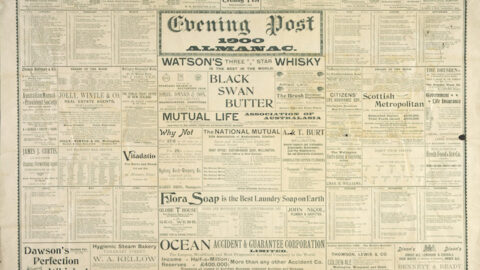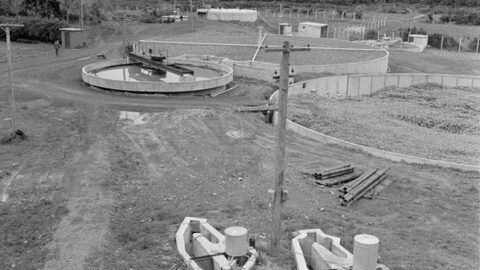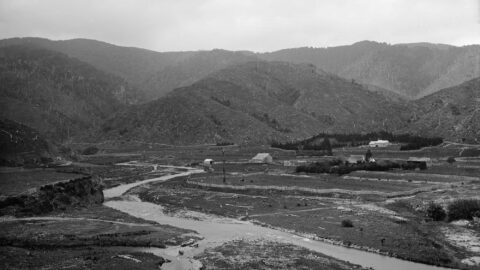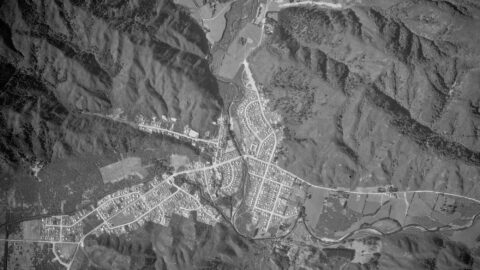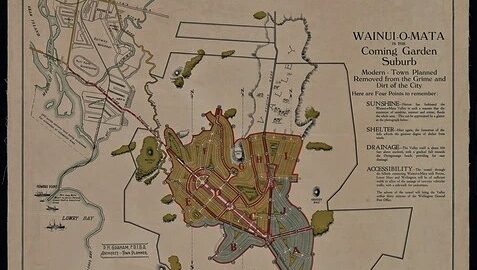The Wainui-o-mata Water-shed – To the Editor
Sir –
You have laid down the principle that the Corporation must be bound by the strict legal interpretation to be attached to the Sinclair agreement. Very well, let that be so. But what is sauce for the mortgagee’s goose is sauce for the municipal gander. On behalf of the Corporation, I have requested the Waste Lands Board not to sanction the alienation of section No.94, Wainui-o-mata, which has been “applied for” by Messrs Sinclair, and I think it will not be difficult to show that if the Board sanctions the sale it will do so in distinct contravention of the Waste Lands Regulations.
It has been stated to me, by a gentleman who is undoubtedly an authority upon questions of this nature, that should the surveyor, after examination and survey of the land, declare it to be “pastoral land,” it must be granted to the applicants, this opinion being based upon section 8 of the Waste Lands Regulations of 1865, which is as follows: “All pastoral land may be purchased at the fixed price of seven shillings and sixpence per acre, at any time before or after survey, in the same manner as, and in accordance with, the regulations of the province of Wellington for the purchase of rural lands, but in quantities not less than one square mile, and in such form as may be determined by the Board.”
Mark the overshadowing stipulation which is embodied in the clause. The land is to be purchased “in the same manner as, and in accordance with, the regulations of the province of Wellington for the purchase of rural lands.” Now, what do the regulations for the purchase of rural land say? They say this: “Rural allotments to be generally of a rectangular form, and extend at least forty chains in depth from roads, rivers,” &c. “Every allotment of rural land must, so far as circumstances and the natural features of the country will admit, be selected of a rectangular form, and where fronting upon a river, road, lake, or coast, be of a depth from the front of at least half-a-mile. No such allotment must be selected so as to monopolise the wood or water in any particular locality.”
This is very strong. The allotment must be rectangular. I have ascertained from persons for many years connected with the survey and sale of waste lands in this province that the rectangle indicated in the regulation is the simple rectangle A B C D – depth twice the length of the frontage. Where fronting upon a river the allotment must be of a depth of at least half-a-mile! And it must not monopolise the wood or water!
Now what are the shape and dimensions of section No.94, as “applied for” by Messrs Sinclair? They are these: There are typographical difficulties in the way of giving an exact delineation of the section, but the illustration is sufficiently accurate for all purposes. It shows how well the section monopolises the river front for four miles and three-quarters, and how completely it subverts the stipulation as to rectangular depth. The selection, in fact, is a water-front monopoly of an unmistakeable character.
I am afraid to take up any more of your space, because I know how great are the demands upon your columns. The importance of the subject is my apology, and I therefore trust you will see your way to insert this letter.
I am, &c.,
Geo. Fisher.
19th February 1883.
[We have not laid down the principle that the Corporation must be bound by the strict legal interpretation to be attached to the “Sinclair agreement.” On the contrary, we hold strongly that the agreement ought to be construed equitably in its spirit. But we did, and do, regret that the interests of the city should not be more efficiently protected than by the very loose and irregular document which, we gather from the Mayor’s remarks, is all the Corporation has to show as securing even its right of passage – Ed. E.P.]
Tags: Land Newspaper Sinclair Waterworks
